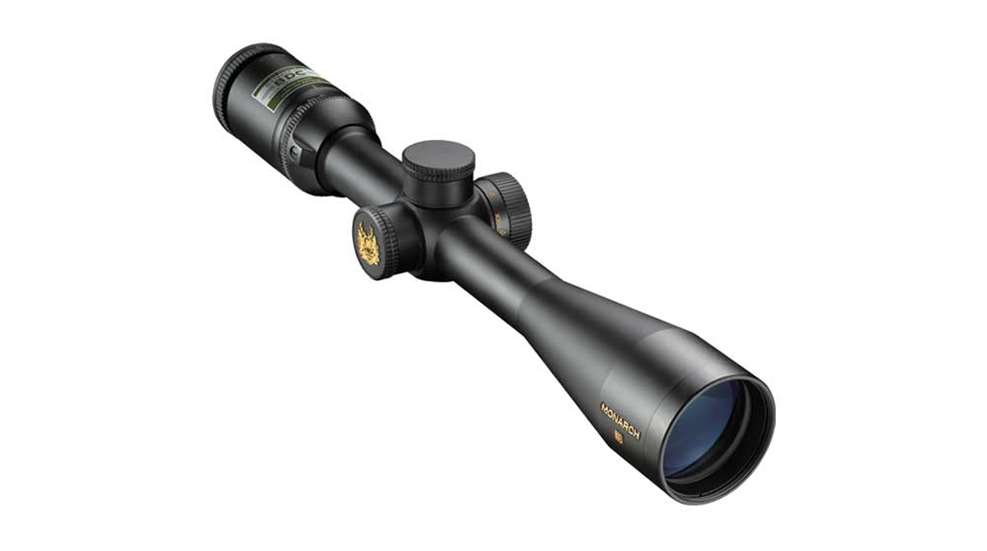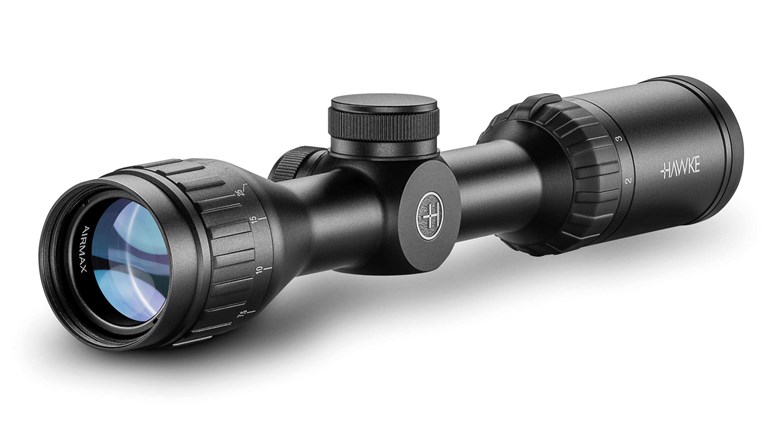
I count myself as lucky to have both been a witness to and participant in the evolution of modern tactical riflescopes. Where military and law enforcement snipers—and everyone else wishing to have a good fighting rifle scope—were once limited to whatever the commercial market thought best for hunters and target shooters, they now have a wide variety of functional optics that further their fighting rifle capabilities in spades. Scopes with reticles in the first focal plane (FFP), like the new Nikon Monarch 3 4-16x50 BDC riflescope, have been a key element of this modern progression.
Once upon a time, a handful (as in two or three) of our military R&D folks literally begged optics manufacturers to build FFP scopes for military use. Today, nearly every decent riflescope manufacturer offers at least one such model. The best sign of FFP’s acceptance is seeing it offered in optics at the mid- and low-priced ends of the non-tactical scope spectrum. Some manufacturers have been slower than others to get into the game, and Nikon is one of the most recent players. A number of optics carrying its “Distance Lock” moniker feature first focal plane reticles, like the Nikon Monarch 3 4-16x50 BDC riflescope.
The beauty of a FFP optic is that when using any reticle with graduations built into the stadia—be they Mil, MOA or BDC—the reticle and target image sizes remain relative to each other when adjusting the magnification (power) up or down. Conversely, second or rear focal plane (SFP) scopes typically must be set at their highest power in order to use reticle markings. That’s OK for long range shots in clear conditions, but shooting in low light (dusk or dawn), high mirage or rainy conditions often requires us to dial down in power to get a clearer image.
When on the move and potentially presented with both near and far shots, a SFP scope forces one to choose between low power for quick acquisition or high power for use of reticle hold-overs. Not so with FFP—just set it on the appropriate power to get the best image and use your normal elevation and windage hold points in the reticle, regardless of magnification.
Nikon’s FFP scopes, including the Monarch 3 4-16x50 riflescope, all use the company’s BDC reticle. It features a 1/4-MOA wide, main stadia with thicker, duplex-style side portions. The bottom stadia features a series of open-center circles measuring 1.5 MOA across the insides and spaced at different intervals for use as hold over points. Nikon pairs this reticle with its Spot On ballistic program to provide shooters a quick way to develop “dope” on their gun/ammo/scope combination for different distances.
This web-based program is simple to use, allowing input of atmospheric variables and either common, pre-loaded cartridges or custom cartridge data you can enter manually. The result is a graphic display of different hold-over points in the reticle, specific to your cartridge. Spot On also has an option to print range cards.
I recently evaluated 4-16x50 BDC riflescope version from the Nikon Monarch 3 Distance Lock line. My goal was to see how a mid-priced scope would perform both for precision work on paper and in more of a field-shooting scenario. All the scopes in this series use 1-inch main tubes, which is fine for light-duty hunting or target optics where manually dialing in lots of elevation is not likely to be needed. The turrets were easy to slip for my zero setting using the nifty “Instant Zero Reset” feature. Screw-on hunter caps protect the turrets and once zeroed the caps may be left in place until it’s time to re-zero to different ammo or atmospheric conditions. The eyepiece has a quick focus diopter ring while a separate, side parallax knob brings the target into focus and into the same image plane as the reticle.
I mounted the Nikon Monarch 3 4-16x50 BDC riflescope to a semi-auto 7.62x39 light AR-15 carbine as well as a 20-inch .308 Win AR-10 rifle for testing. At 100 yards the 1/4-MOA wide center-cross aiming point was just about right for shooting groups. At longer ranges I found the 1.5 MOA circle hold over centers to be a bit large for fine aiming. They worked well for larger, animal-size targets, though. I measured several objects using the reticle subtensions and found them to be spot-on for size. That can be a useful tool to aid in range estimation if you know the size of the target you happen to be looking at.
The Nikon Monarch 3 4-16x50 BDC riflescope's 1/4-MOA click adjustments were right on the money and image clarity was slightly better than I would expect for a scope retailing at just over $600. I found eye relief to be a bit shorter than advertised and unforgiving, with lots of “vignette effect” if my head placement was not perfect. After shooting groups on both rifles, I took the light carbine downrange and did a series of rapid acquisition engagements at different distances and scope powers. The heavy side stadia lines helped me pick up center reticle at 4X and I know that with practice, one can get pretty fast at shooting close targets that way. Thankfully, no torque-lever was needed to turn the variable zoom ring, which was a nice departure from most scopes I use.
All the optics in this line are said to be water/fog/shock proof and though I didn’t subject this Nikon Monarch 3 4-16x50 BDC riflescope to a torture test, it held up just fine over 140 rounds in 90 degree heat and 98-percent humidity. The matte finish was appropriate for field use and the soft rubber flip-open lens covers were a nice idea, but my front cap would not stay closed. Nikon’s limited, lifetime warranty includes a “No-fault repair/replacement” policy for non-electronic riflescopes, so any problem outside of user-abuse is likely to be covered.
All in all I think the Nikon Monarch 3 4-16x50 BDC riflescope tested here was a good optic for the money. I would not hesitate to mount it on a rifle intended for hunting or target shooting. I am happy to see Nikon moving into the 21st century and hope they continue in this direction with more robust optics for the tactical market, too.
Nikon Monarch 3 4-16x50 BDC Riflescope
Power: 4-16
Adjustability: 36 MOA elevation in 1/4 MOA clicks
Objective: 50 mm
Reticle: BDC
Illumination: None
Weight: 19.4 ounces
Length: 14.7 inches
Tube: 1 inch
FOV: 23.9’ (4x) / 6 inches (16X) at 100 yards
Eye Relief: 4 to 3.7 inches
MSRP: $629.95




































